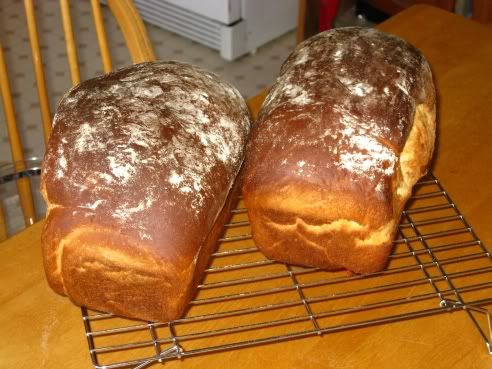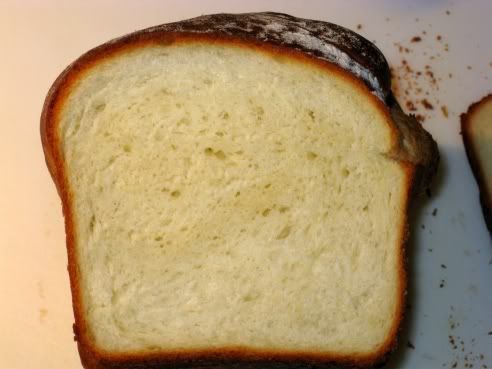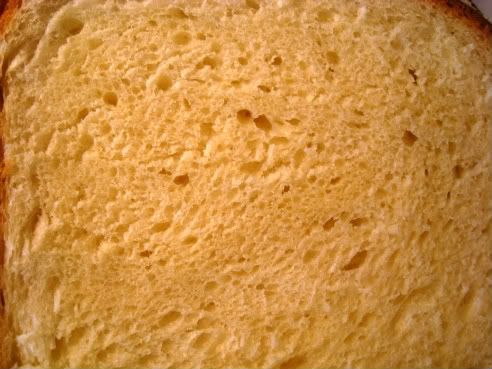I remember having the same reaction to my dad's bread back in the 1970's when he made 12 white loaves every other Saturday- all I wanted was bread like everyone else had. By coincidence, my mother in law made bread for for her family when my husband was growing up, and all he wanted was "rubber bread". It must be a kid thing.
The original recipe is made with a stand mixer and divided into 3 loaves.
I dusted the risen loaves with flour, which is why they have that speckled streaky floured crust. The next time I make this bread, I'll either bake it at the lower temperature recommended (375F) or bake it for a shorter period of time (45 to 50 minutes).
I'm getting used to the blowouts on the sides. It doesn't happen with every loaf, but often when I bake two at a time the sides that face away from each other blow out. They still taste lovely, even of they don't look fantastic.
Honey White Loaves
Lois Kamps
makes 2 loaves
2 (.25 ounce) packages active dry yeast (16 grams) NOT INSTANT!
2 1/2 cups warm water (110 degrees to 115 degrees)
1/2 cup butter or margarine, melted
1/2 cup honey
2 eggs
1 tablespoon salt
8 cups all-purpose flour
In a mixing bowl, dissolve yeast in warm water. Add the butter, honey, eggs, salt and 4 cups flour, mixing with a whisk.
Stir in enough remaining flour, 1/2 a up at a time, until a soft dough forms
Turn onto a floured surface; knead until smooth and elastic, about 8 minutes.
Place in a greased bowl, turning once to grease top. Cover and let rise in a warm place until doubled; about 1 hour. Be aware, that as this dough has eggs and butter, both of which coat the strands of gluten and thus slow the rising of the dough, the rising time may be longer for it to double in size.
Degas the dough.
Let rise another 45 minutes. Degas the dough.
Divide the dough into two even pieces. Use a scale to be accurate.
Grease two 9 x 5 x 2 3/4 pans. Shape into logs for pan rising.
Set to rise for 60 minutes.
Bake at 400F for 45 minutes or until golden brown. Remove from pans to wire racks to cool.
If, as I did, you forget to add the salt while making the dough and realize that during the first rise, you can save the it:
- Dissolve the salt in hot water in a small bowl.
- Make a well in the centre of the dough while still in the rising bowl.
- Add the salty water to the well you just made, making sure all the salt is added and not stuck in the bowl.
- Knead the salt into the dough as much as possible while in the bowl, then remove to your kneading surface.
- Keep kneading until you feel the salt has been incorporated, about 3 minutes.
- Add a little more flour if needed (no more than 1/4 cup) to counter balance the added water.
- Restart the rise from the beginning.




No comments:
Post a Comment